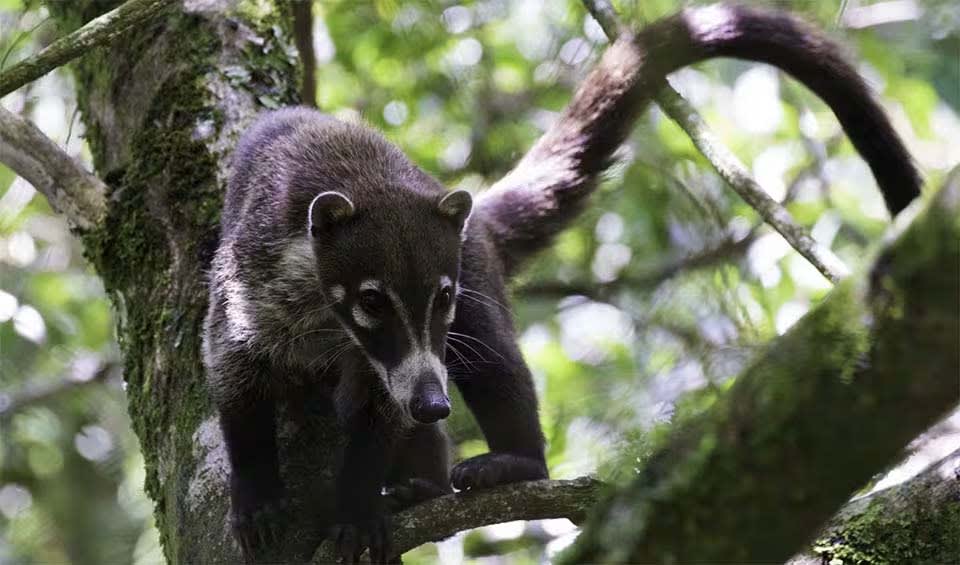Nasua – Coatis
Juveniles mortality in the genus is exceptionally high; danger includes being hunted by adult males
Through meticulous DNA sequence analysis, it has been determined that species within this genus began diverging from one another approximately 5.6 million years ago. This genus encompasses the widely recognized South American Coati (Nasua nasua) and the White-nosed Coati (Nasua narica). Initially, the smaller, white-nosed coatis were classified under the genus Nasuella, but subsequent genetic studies have led to a consolidation of Nasuella and Nasua, highlighting the close evolutionary relationship between these species.
Coatis are characterized by their elongated snouts, which are highly flexible and can be rotated up to 60 degrees in any direction. This unique adaptation allows them to forage efficiently, digging into crevices and under leaf litter to find food. They possess strong, curved claws that are adept at climbing and excavating. Their tails, often held erect while moving, provide balance and serve as a visual signal to other members of their group. Adult males tend to be larger and possess larger canine teeth compared to females and juveniles, a trait that once contributed to the taxonomic distinction between Nasua and Nasuella.
Coatis are opportunistic omnivores with a diet that predominantly consists of fruit, which constitutes the majority of their intake. However, their dietary habits are highly versatile, including spiders, larvae, other invertebrates, and small vertebrates such as lizards, rodents, and bird eggs. Their sharp, curved claws are useful for climbing and play a crucial role in their foraging behavior, allowing them to tear apart wood and turn over rocks in search of food.
One of the coatis’ most distinctive features is their highly sensitive nose, which is adept at sniffing food sources on the ground and within the dense leaf litter of the forest floor. This keen sense of smell is instrumental in locating prey and identifying ripe fruits, underlining their adaptability to various habitats and food availability.
Species in this genus
Western mountain coati
Plays a vital role in controlling the underground invertebrate population as they mainly prey on insects
White-nosed coati
Helps balsa trees to pollinate while they provide an essential resource of nutrition and hydration in return when the resources are scarce



